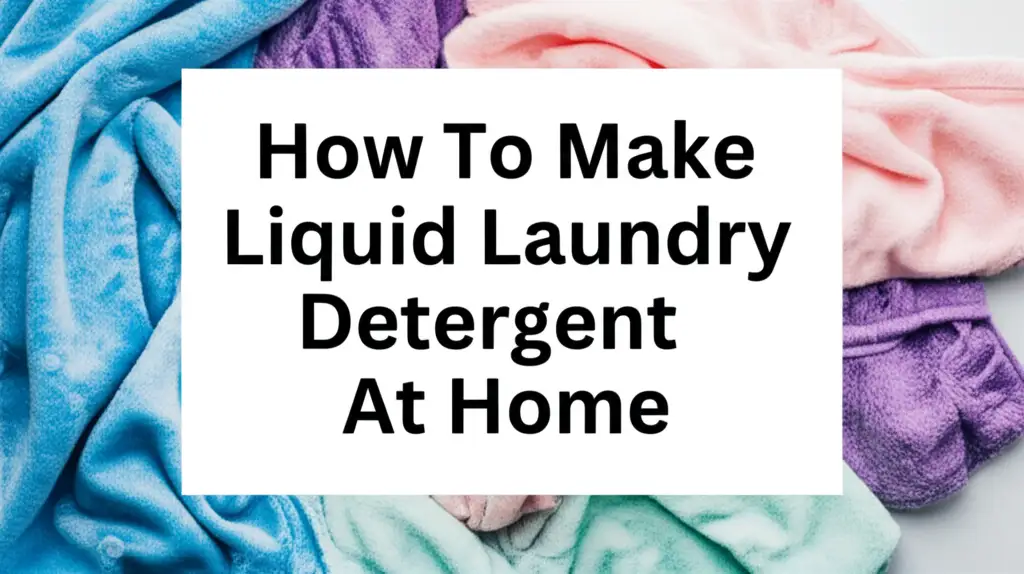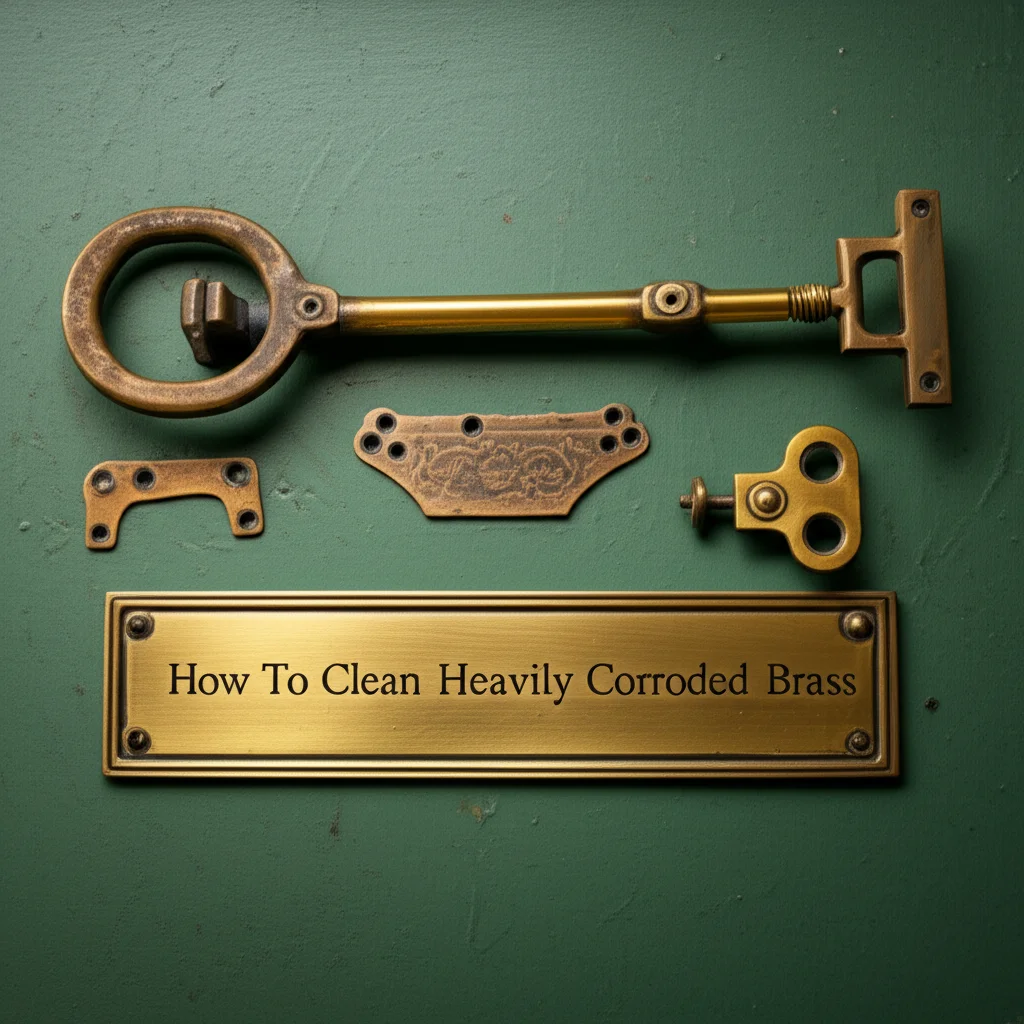· Todd Martin · Home Care · 19 min read
How To Clean Hardwood Floors Naturally

How To Clean Hardwood Floors Naturally for a Pristine Home
Your hardwood floors add beauty and warmth to your home. Many people worry about using harsh chemicals on these surfaces. This is where learning how to clean hardwood floors naturally becomes a game-changer. Natural cleaning solutions protect your floors. They also keep your home environment safe for pets and children. I know the desire for a clean home without toxic fumes. That is why I want to share effective, simple, and affordable natural methods. This article covers everything from basic daily care to deep cleaning techniques. You will find out which natural ingredients work best. You will also learn how to apply them safely. I will guide you through preparing your floors, tackling specific stains, and maintaining their natural luster.
Takeaway
Achieving sparkling, chemical-free hardwood floors is simple. You can use common pantry items. These natural solutions protect your family and the environment.
- Embrace natural ingredients: White vinegar, water, and essential oils are your cleaning allies.
- Clean regularly: Dust and sweep often to prevent grime buildup.
- Target specific issues: Use tailored natural remedies for pet stains or sticky spots.
- Maintain your floors: Prevention and proper care keep them looking their best.
Answer to Main Query
You can clean hardwood floors naturally using diluted white vinegar or a mild castile soap solution. These methods effectively remove dirt and grime without harsh chemicals. They leave your floors sparkling and safe for your family and pets.
Why Choose Natural Cleaning for Hardwood Floors?
Many homeowners prefer natural cleaning methods for their hardwood floors. These choices offer many benefits. They go beyond just keeping your floors looking good. Natural cleaning solutions protect your family’s health. They also benefit the environment. I often think about the air quality in my home. Traditional cleaners contain volatile organic compounds (VOCs). These compounds release into the air. They can cause respiratory issues or skin irritation. Using natural ingredients helps you avoid these risks.
Natural solutions are also safer for children and pets. Kids play on the floor. Pets often nap there. Chemical residues left behind can be harmful if ingested. Natural cleaners remove dirt without leaving dangerous substances. This creates a much safer play area for everyone. My peace of mind increases when I know my home is genuinely clean.
These natural options are also gentle on your floors. Hardwood floors are an investment. Harsh chemicals can strip away finishes. They can also dull the wood over time. Natural cleaners work effectively without damaging the surface. This helps your floors last longer. They keep their beautiful shine for many years. Choosing natural methods helps you maintain your home’s value. It also supports a healthier living space.
Finally, natural cleaning is eco-friendly. Many commercial cleaners come in plastic bottles. Their ingredients end up in waterways. This harms aquatic life. DIY natural cleaners reduce plastic waste. They use biodegradable ingredients. This lessens your environmental impact. It feels good to know my cleaning routine helps the planet. It makes your cleaning efforts more sustainable.
Essential Natural Ingredients for Hardwood Floor Cleaning
Cleaning hardwood floors naturally relies on a few common household items. These ingredients are safe, effective, and readily available. They offer a powerful alternative to chemical-laden products. Understanding how to use them is key. You can create effective cleaning solutions at home. I have tried many combinations. These are the ones that work best for different cleaning needs.
The Power of Vinegar and Water
White vinegar is a staple for natural cleaning. It cuts through grease and grime. It also deodorizes surfaces. Its acidic nature makes it an excellent disinfectant. For most hardwood floors, a simple vinegar and water solution works wonders. I usually mix half a cup of white vinegar with one gallon of warm water. This dilution is safe for most sealed hardwood finishes. The vinegar smell disappears as the floor dries. It leaves no lingering odor. This solution effectively removes dirt. It leaves a streak-free shine. I find it perfect for weekly maintenance cleaning.
You can also add essential oils for a pleasant scent. A few drops of lemon, lavender, or tea tree oil give a fresh aroma. Tea tree oil adds extra antibacterial properties. Be careful not to use too much essential oil. A little goes a long way. This mixture is a gentle yet powerful cleaner. It is suitable for how to clean wood floors with vinegar.
Gentle Cleaning with Castile Soap
Castile soap is another fantastic natural cleaner. It comes from plant oils. It is biodegradable and non-toxic. Castile soap is a mild alternative for floors that might be sensitive to vinegar. I often use it for general cleaning or when I want a fresh, clean scent. Mix one or two tablespoons of liquid castile soap with a gallon of warm water. This creates a gentle, effective cleaning solution.
This solution is perfect for lightly soiled floors. It leaves no residue. It does not strip your floor’s finish. It is also good for floors needing a soft touch. It works well on how to clean engineered hardwood floors. Always use a damp, not wet, mop when cleaning with any liquid. Too much water can damage hardwood.
Baking Soda for Tough Spots
Baking soda is a versatile natural cleaner. It excels at absorbing odors and acting as a mild abrasive. It is useful for specific, tougher spots on your hardwood floor. I use it for scuffs, greasy spots, or light stains. Make a paste with baking soda and a little water. Apply the paste directly to the spot. Gently rub with a soft cloth. Then wipe it clean with a damp cloth. Finish by drying the area thoroughly.
Baking soda can also help with pet odors. If you have a pet accident, clean the liquid first. Then sprinkle baking soda over the damp spot. Let it sit for several hours or overnight. This absorbs the odor. Vacuum the baking soda afterward. This method is a key part of learning how to clean dog urine from hardwood floors. Always test on an inconspicuous area first. This ensures no discoloration.
Preparing Your Hardwood Floors for Natural Cleaning
Before you start any wet cleaning, proper preparation is essential. This step makes your natural cleaning efforts more effective. It also prevents damage to your beautiful hardwood floors. Skipping preparation can lead to unsatisfactory results. It can even cause scratches. I always take a few minutes for this important pre-cleaning process.
First, remove all small furniture and rugs from the area you plan to clean. This gives you full access to the floor. It also prevents tripping hazards. Lift chairs, tables, and decorative items. Place them in an adjacent room. This makes sweeping and mopping much easier. My goal is always to have a clear path.
Next, you need to remove loose dirt and debris. Use a soft-bristle broom or a vacuum cleaner with a hardwood floor attachment. Sweep or vacuum thoroughly. Pay attention to corners and under furniture. Small particles like dust, grit, and crumbs can scratch your floor if left there during mopping. I often run my hand over the floor afterward. This ensures no gritty bits remain. For general guidance on preparing your floors, consider reviewing tips on how to clean hardwood floors thoroughly.
For very dirty areas, you might need a slightly damp cloth to wipe up caked-on dirt. Do this before applying your cleaning solution. This pre-wiping avoids spreading grime. It also helps your cleaning solution work better. I typically use plain water for this preliminary wipe. This helps lift the surface layer of dirt.
Consider protective measures for your furniture. If you cannot move heavy furniture, place felt pads under its legs. This prevents scratches when you clean around it. Using entrance mats at doorways also helps. They trap dirt and moisture before it reaches your hardwood. This reduces the amount of cleaning needed. It also preserves your floors over time. A little preparation saves a lot of effort later.
Step-by-Step Guide to Naturally Cleaning Hardwood Floors
Cleaning hardwood floors naturally is a straightforward process. It involves a combination of regular maintenance and deeper cleaning. Following these steps helps you maintain their beauty. It also keeps them healthy and chemical-free. I break it down into daily, weekly, and specific stain-tackling routines.
Daily Dusting and Sweeping
Regular dusting and sweeping are your first line of defense. Dust, pet hair, and small debris accumulate quickly. These particles act like sandpaper underfoot. They can scratch your floor’s finish over time. I try to sweep or dust my hardwood floors daily. At a minimum, I do it every other day.
Use a soft-bristle broom or a microfiber dust mop. These tools are gentle on the wood. They effectively pick up loose dirt. A vacuum cleaner with a hardwood floor attachment is also excellent. Make sure the beater bar is off or retracted. The hard bristles of a beater bar can scratch the finish. Daily removal of dry debris prevents buildup. It also makes your deeper cleaning sessions easier. This simple routine protects your investment.
Weekly Mopping with Natural Solutions
Weekly mopping keeps your hardwood floors looking their best. This is where your natural cleaning solutions shine. I prepare a solution of 1/2 cup white vinegar to 1 gallon of warm water. For a fresh scent, I add a few drops of lemon essential oil. If I prefer, I use 1-2 tablespoons of liquid castile soap per gallon of warm water instead.
Always use a microfiber mop or a well-wrung-out mop. Microfiber mops pick up dirt effectively. They also release minimal water. This is crucial for hardwood. Damp mopping is the goal, never wet mopping. Excessive water can warp or damage wood floors. Mop in small sections. Rinse your mop head often. Wring it out thoroughly each time. This prevents spreading dirty water. After mopping a section, I immediately dry it with a clean, dry microfiber cloth. This prevents water spots and ensures a streak-free finish. For general guidance on this, many tips apply to how to clean wood floors.
Tackling Stubborn Stains Naturally
Even with regular cleaning, stubborn stains can appear. Natural remedies are effective for most common issues. The key is to address them quickly.
- Grease Stains: Sprinkle cornstarch or baking soda directly on the grease spot. Let it sit for 15-20 minutes. The powder absorbs the grease. Then, gently wipe it away with a soft, damp cloth. Repeat if necessary.
- Ink Marks: Dab a small amount of rubbing alcohol onto a cotton ball. Gently blot the ink stain. Do not rub vigorously. Blot until the ink lifts. Follow up with a damp cloth and dry thoroughly.
- Scuff Marks: Minor scuff marks often disappear with a pencil eraser. Gently rub the eraser over the mark. Then wipe away any residue. For tougher scuffs, a paste of baking soda and water works well. Apply, gently rub, and wipe clean.
- Water Marks: For fresh water marks, use a blow dryer on a low setting. Hold it a few inches from the mark. Move it constantly. For older, white water marks, apply a thin layer of mayonnaise or petroleum jelly. Let it sit for several hours or overnight. Wipe it away. The oil helps draw out the moisture. For more specific cleaning on various wood types, consider guides like how to clean old wood floors.
- Sticky Residue (gum, adhesive): Place an ice cube in a plastic bag. Hold the bag on the sticky substance until it hardens. Gently scrape it off with a plastic scraper or credit card. Avoid metal tools. Then wipe the area with a damp cloth.
Always test any new cleaning method in an inconspicuous area first. This ensures no damage or discoloration. Patience and gentle application are key with natural stain removal.
Natural Solutions for Specific Hardwood Floor Challenges
Hardwood floors come in various types and finishes. Each can present unique cleaning challenges. Fortunately, natural solutions often provide the gentlest and most effective answers. I have personally dealt with many specific issues. I found that tailoring the natural approach makes a real difference.
Eliminating Pet Stains Naturally
Pet accidents are common in homes with hardwood floors. The key to successful natural cleaning is speed. Act quickly to prevent urine from soaking into the wood. First, blot up as much liquid as possible with paper towels or a clean cloth. Step on the towels to maximize absorption.
Once the liquid is gone, saturate the area with a solution of half water and half white vinegar. The vinegar neutralizes odors and helps break down the urine. Let it sit for 5-10 minutes. Blot dry thoroughly. For stubborn odors or stains, sprinkle baking soda over the still-damp area after the vinegar treatment. Let it sit overnight to absorb remaining odors. Vacuum the baking soda in the morning. This method is very effective for how to clean dog urine from hardwood floors. For dark stains, a paste of hydrogen peroxide (3%) and baking soda can be used. Apply the paste, cover with plastic wrap, and let it sit for a few hours. Always test hydrogen peroxide on an inconspicuous spot first, as it can lighten wood.
Restoring Shine to Waxed Floors
Waxed hardwood floors require a special touch. Natural cleaning methods are ideal for maintaining their unique finish. You should avoid water-based cleaners and vinegar on waxed floors. These can strip the wax or leave them dull. I use a slightly different approach for these floors.
For routine cleaning, a dry dust mop or a vacuum with a soft brush attachment is best. For occasional deeper cleaning, a solution of mineral spirits is safe. Dampen a cloth with mineral spirits. Wipe a small section of the floor. Buff immediately with a clean, dry cloth. Mineral spirits dissolve dirt and old wax buildup without harming the existing wax. After cleaning, you may need to reapply a thin layer of wax if needed. This keeps the floor protected and shiny. Understanding how to clean waxed wood floors properly preserves their unique appearance.
Cleaning Unsealed Hardwood Gently
Unsealed hardwood floors are beautiful. They are also more susceptible to moisture damage. They require an extremely gentle natural cleaning approach. Water should be used minimally, if at all. I rarely use liquid cleaners on truly unsealed floors.
For daily maintenance, a soft-bristle broom or a dry dust mop is paramount. For spots or light cleaning, a slightly damp cloth with plain water can be used. Wring the cloth out almost completely. Wipe the spot. Immediately dry the area with a separate clean, dry cloth. Do not let any water sit on unsealed wood. For deeper cleaning, you might use fine steel wool to buff out surface marks. Then apply a natural wood conditioner or oil. This nourishes the wood. It also provides a slight protective barrier. It is crucial to be gentle when learning how to clean unsealed hardwood floors. Protecting their natural state is the goal.
Maintaining Your Naturally Clean Hardwood Floors
Keeping your hardwood floors beautiful and naturally clean is an ongoing effort. It is not just about cleaning. It is about prevention and smart daily habits. I have found that a consistent routine saves time and preserves the life of my floors. Think of it as a proactive approach to floor care.
First, consider implementing a “no shoes in the house” policy. Shoes track in dirt, grit, and chemicals from outside. These act as abrasives. They scratch and dull your floor’s finish. Bare feet or socks are much gentler. This simple rule significantly reduces the amount of dirt on your floors. It means less frequent deep cleaning. It is one of the easiest ways to protect your investment.
Place mats at all entryways. These mats trap dirt and moisture before it spreads onto your hardwood. Choose mats that are safe for hardwood floors. Some rubber-backed mats can discolor wood over time. Look for breathable options. Place area rugs in high-traffic areas. These protect the wood from wear and tear. They also add comfort and style. Be sure to check what kind of rugs are safe for hardwood.
Regular dusting and sweeping are non-negotiable. I use a microfiber dust mop daily. This picks up pet hair, dust, and crumbs. These small particles can scratch the floor if left on the surface. Weekly vacuuming with a hardwood floor attachment is also a good habit. These dry cleaning methods prevent dirt from building up. They keep your floors looking fresh between wet cleanings.
Address spills immediately. Liquids, especially acidic ones, can stain or damage hardwood if left too long. Blot up spills with a clean, dry cloth as soon as they happen. Do not rub. Rubbing spreads the liquid and can push it into the wood. Quick action prevents staining. This helps preserve your floor’s natural beauty.
Finally, protect your floors from furniture scratches. Place felt pads under the legs of all furniture. This prevents dents and scratches when furniture moves. Reapply or replace these pads as needed. For chairs that move frequently, consider using furniture glides. These small measures greatly extend the life and appearance of your naturally cleaned hardwood floors. They make your efforts to maintain a clean home much more effective.
Common Mistakes to Avoid When Naturally Cleaning Hardwood Floors
While natural cleaning methods are excellent, some common mistakes can still harm your hardwood floors. Avoiding these pitfalls ensures your floors stay beautiful and protected. I have learned these lessons over time. I want to share them so you can avoid similar issues.
One of the biggest mistakes is using too much water. Hardwood and excess water do not mix. Water can cause wood to swell, warp, or buckle. It can also strip the finish. Even when using natural solutions like vinegar and water, always wring your mop out very thoroughly. It should be barely damp. I always say, “If it looks wet, it’s too wet.” Immediately dry any standing water on the floor with a clean, dry cloth. This prevents water damage and streaks. Many general tips for how to clean real hardwood floors emphasize this point.
Another mistake is using the wrong natural ingredients. While vinegar is great for sealed floors, it can dull waxed or unsealed finishes. Similarly, harsh abrasives, even natural ones, can scratch your floor. Baking soda should be used as a paste for spot cleaning. Avoid scrubbing large areas with it. Always research your floor’s finish before applying any new cleaning agent. For example, knowing the proper approach for how to clean polyurethane floors is crucial.
Ignoring floor finish types is a critical error. Not all hardwood floors are sealed with the same material. Some are polyurethane, some are waxed, and others might be oil-finished or unsealed. Each finish requires a specific natural cleaning approach. Using a vinegar solution on a waxed floor, for instance, can remove the wax. This leaves the floor unprotected and dull. Always understand your floor’s finish first.
Over-saturating microfiber cloths is also a common error. Just like mops, cloths used for wiping down spills or applying solutions should be damp, not dripping. Excess moisture can seep into cracks and cause damage. Always wring them out well.
Finally, neglecting regular dry cleaning is a mistake. Dust and grit are the enemies of hardwood floors. They act like sandpaper, slowly eroding the finish. Relying only on wet cleaning every once in a while is not enough. Daily sweeping or dusting helps prevent this abrasive action. It keeps your floors cleaner for longer. My recommendation is to make daily dry cleaning a habit. This prevents deep-seated dirt from accumulating. It ensures your natural wet cleaning efforts are truly effective.
Frequently Asked Questions
Q1: Is vinegar safe for all hardwood floors?
White vinegar is generally safe for sealed hardwood floors with a polyurethane or factory finish. However, it is not recommended for waxed, unsealed, or oil-finished floors. Vinegar’s acidity can strip wax, dull the finish, or penetrate unsealed wood. Always test in an inconspicuous area first.
Q2: Can I use essential oils when cleaning hardwood floors?
Yes, you can add a few drops of essential oils like lemon, lavender, or tea tree oil to your natural cleaning solution. They provide a pleasant scent and some, like tea tree oil, offer mild antimicrobial properties. Do not use too much, as excessive oil can leave a residue.
Q3: How often should I naturally clean my hardwood floors?
You should dust or sweep your hardwood floors daily or every other day to remove loose dirt. Wet mopping with a natural solution is typically recommended weekly or bi-weekly, depending on traffic. Spot clean spills immediately as they occur.
Q4: What natural ingredients should I avoid on hardwood floors?
Avoid abrasive cleaners like scouring powders, even natural ones, as they can scratch the finish. Do not use ammonia-based cleaners, as they can dull the finish over time. Excessive amounts of pure essential oils or olive oil can also leave a sticky residue.
Q5: How do I get a streak-free shine with natural cleaners?
To achieve a streak-free shine, use a very well-wrung-out mop. The floor should dry quickly. Immediately buff the cleaned area with a clean, dry microfiber cloth after mopping. This removes any lingering moisture and polishes the surface.
Q6: Can I use steam mops with natural cleaning on hardwood?
Steam mops are generally not recommended for hardwood floors, even if sealed. The heat and moisture from steam can penetrate the finish and damage the wood over time. Stick to damp mopping with natural solutions and ensure the floor dries quickly.
Conclusion
Cleaning your hardwood floors naturally is an excellent choice for a healthier home. It protects your family, your pets, and your valuable flooring investment. We have covered the many benefits of using natural ingredients. You know why avoiding harsh chemicals is important. You now have the knowledge to create your own effective, eco-friendly cleaning solutions. I hope this guide helps you feel confident in maintaining your beautiful floors.
Remember the key steps: prepare your floors properly, use diluted natural solutions, and always ensure minimal moisture. Regular dry cleaning and immediate spill clean-up are essential for preventing damage. By consistently applying these natural cleaning methods, your hardwood floors will not only shine but also contribute to a safer, more inviting living space. Start today and experience the difference of how to clean hardwood floors naturally. Your home will thank you for it.





